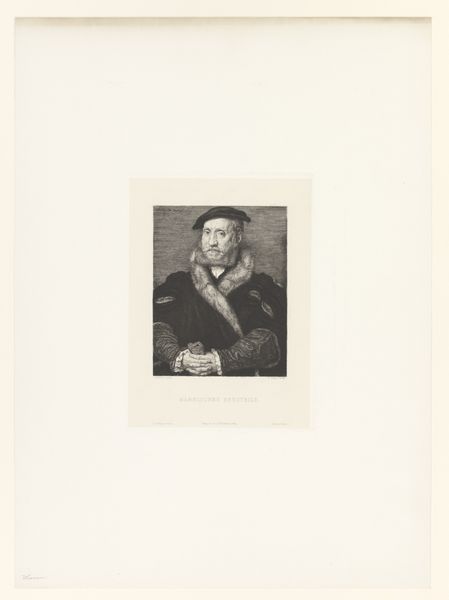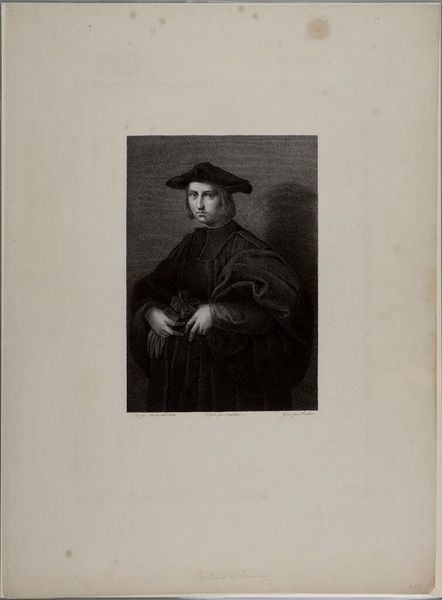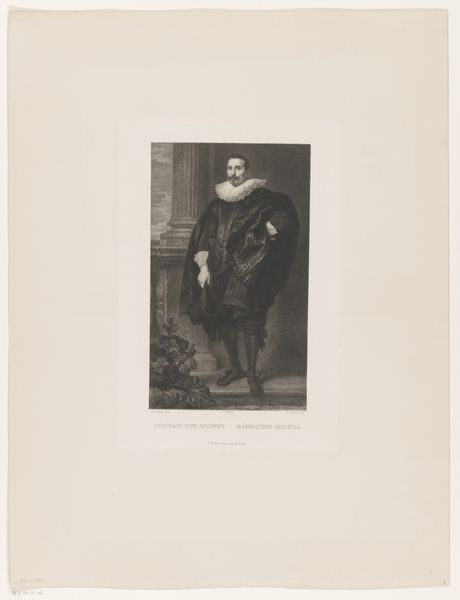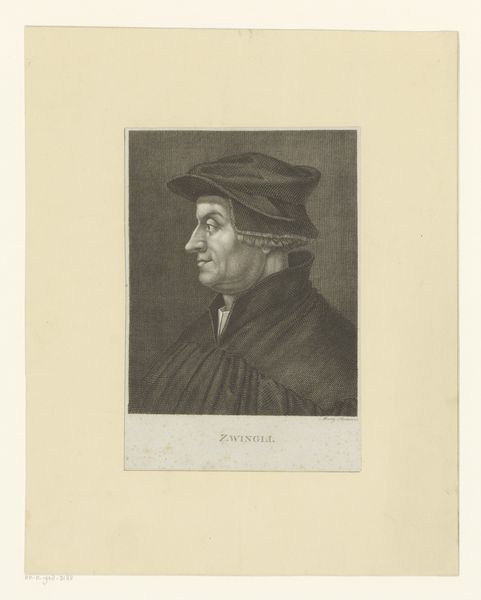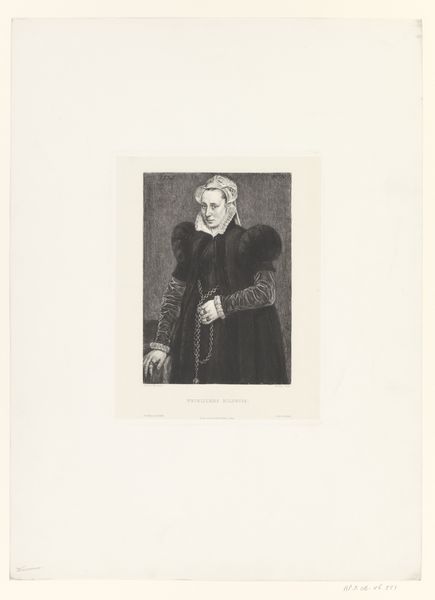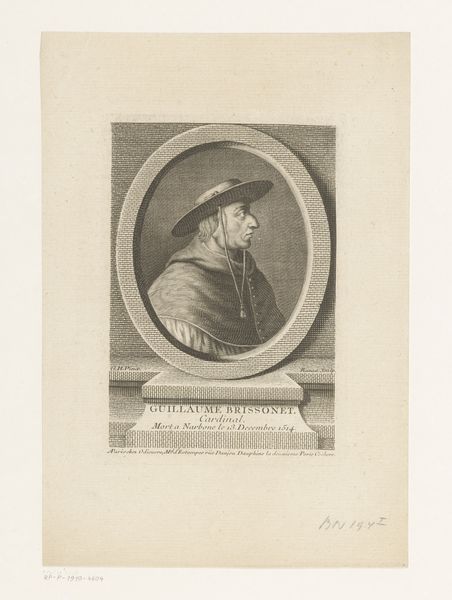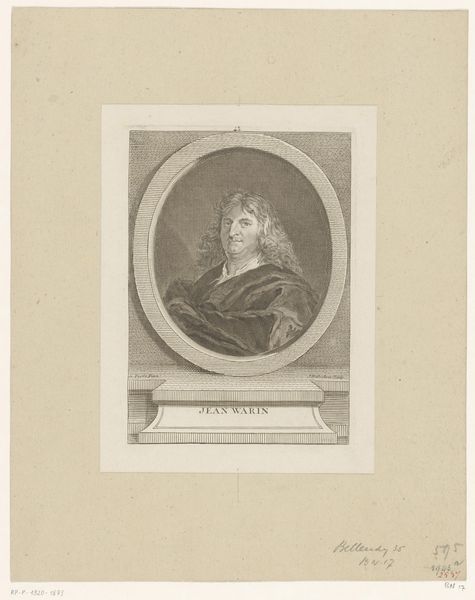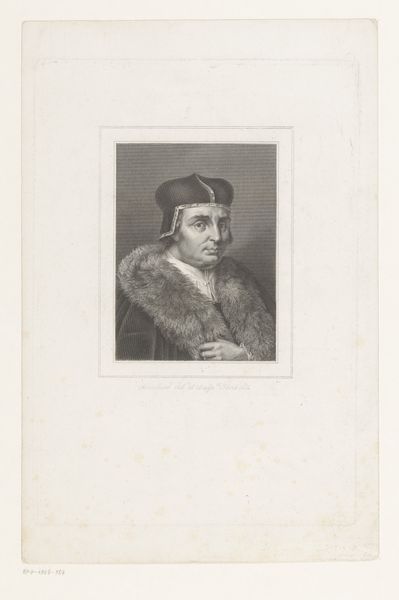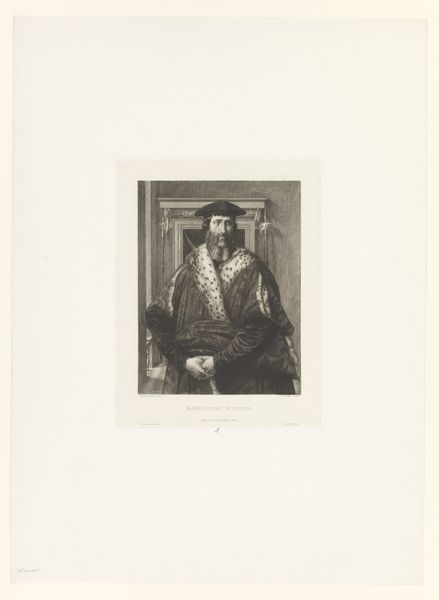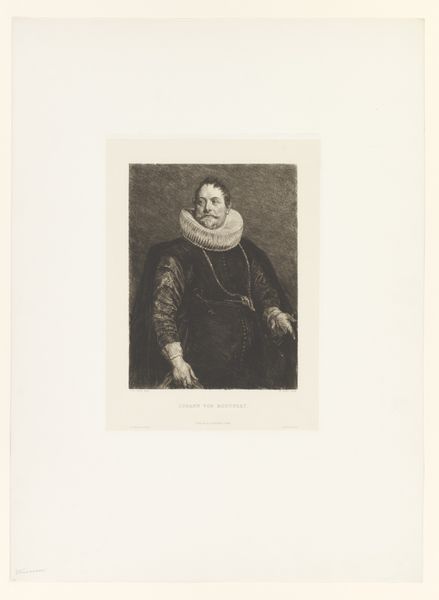
#
pencil drawn
#
photo of handprinted image
#
light pencil work
#
wedding photograph
#
photo restoration
#
natural tone
#
light coloured
#
old engraving style
#
white palette
#
remaining negative space
Dimensions: height 358 mm, width 279 mm
Copyright: Rijks Museum: Open Domain
Curator: What strikes me immediately is the weightiness of the cloak in contrast to the delicate rendering of Maximilian's face. Editor: Indeed, the lithograph, created sometime between 1861 and 1889 by William Unger, holds a quiet drama, doesn’t it? The original resides here at the Rijksmuseum and is titled "Portret van Maximiliaan I van Habsburg.” Curator: Yes, quiet is a perfect word. There's an undeniable tension there, especially considering the context of power and Habsburgian history. Are we seeing a deliberate subversion? A commentary on the burdens of leadership perhaps? It feels melancholic. Editor: Subversion may be a strong word here, but let's consider Unger’s process. Unger's engravings often used labor-intensive methods, each line carefully placed and meticulously etched to produce these gradations in light. What social commentary, or even resistance, lies in demanding careful work like this during the Industrial Revolution, which demanded increased efficiency and mechanization? Curator: That's a rich layer I hadn't fully considered. The detail speaks to something outside industrial capitalism, offering a counternarrative within the imperial gaze. This adds nuance to any contemporary conversation about decolonizing the archive, which is inherently biased, isn’t it? Editor: Exactly, while we consume this lithograph, how many steps, from drawing to the final touches, demanded Unger to confront a class position which greatly differed from his powerful subject, Maximilian? That difference in the division of labor gives the portrait a certain gravity, literally grounded in the working hand. Curator: So, this isn’t merely a portrait, but also a negotiation with power, an artistic performance influenced by social inequities, the very materials imbued with layers of meaning related to class and the political structures. Editor: Precisely. And for me, considering all this labor helps us escape a simplistic hero worship of elite artists or subjects, grounding even the loftiest historical figure in material reality. Curator: A reminder that power never exists in a vacuum. This definitely provides a refreshing, intersectional perspective of not only Maximillian's role, but how artistry navigates class boundaries.
Comments
No comments
Be the first to comment and join the conversation on the ultimate creative platform.
